What's a Velomobile?
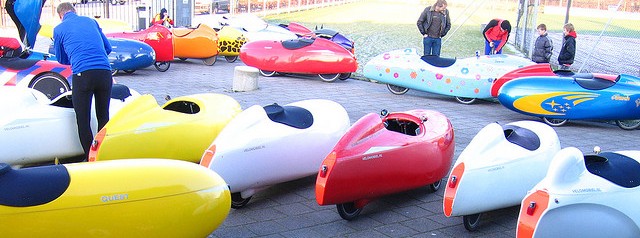
A gathering of velomobiles in the Netherlands, 2008
Creative Commons Licensed Image. Source: Flickr user wim harwig
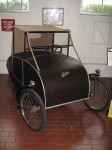 1945 Mochet Velocar
1945 Mochet Velocar
Charles Mochet invented popularised both the velomobile and recumbent bicycle in the early 20th century. His velocars, are the forerunners of all modern velomobiles.
Most commercially available velomobiles are very similar to each other, with few layout variations. Most are 3 wheeled, normally with two wheels at the front (tadpole trike); only a few have a single front wheel (delta trike).
There are two main styles of velomobile:
Cab Style:
With an upright seating position, cab-style velos are comparatively tall, with an eye line at a similar height to a small car. They often have the shorter wheelbase of the two styles, because the rear wheel is brought closer to the rider’s back. This seating position gives a taller body and screen.
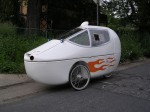 Cab-Bike velomobile
Cab-Bike velomobile
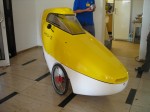 Ped velomobile
Ped velomobile
 Leiba velomobile
Leiba velomobile
Bullet Style:
With the rider seated reclined, the bullet style keeps the rider’s shoulders in line with the highest point of his feet when pedalling. This gives a characteristic shape of a bulbous nose leading a flattened top and sides that taper towards the back. Either the rider’s head protrudes just above the bodywork, or a bulged canopy is used to enclose them.
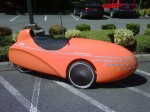 ]
Mango Sport velomobile
]
Mango Sport velomobile
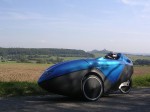 Versatile velomobile
Versatile velomobile
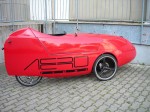 Sunrider velomobile
Sunrider velomobile
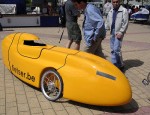 WAW velomobile
WAW velomobile
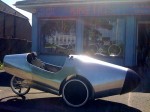 Alleweder velomobile
Alleweder velomobile
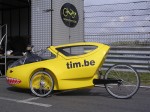 Go-One(3) velomobile
Go-One(3) velomobile
Alternate Designs:
Alternatives exist to these forms. The Birk Butterfly does not have the wheels integrated into wheel wells that are typical of the bullet-style and they are mounted outboard in spats for reduced frontal area. In the Trisled Avatar Supervelo, the wheels are completely enclosed for reduced drag. Others have tried to move away from the bullet shape with alternative designs, like the Velayo.
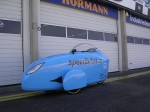 Birck Butterfly velomobile
Birck Butterfly velomobile
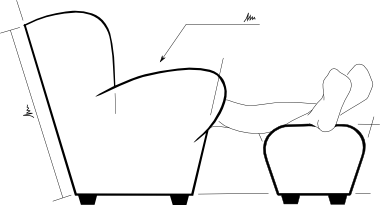
James Murphy wrote, “Erm Mochet most emphatically did NOT invent the recumbent bicycle - there are victorian examples of those variously. He did however see the potential and it was his bicycles that precipitated the UCI ban.”